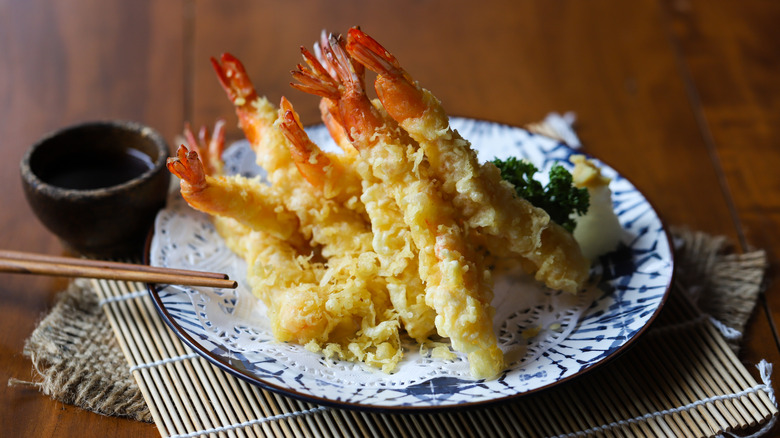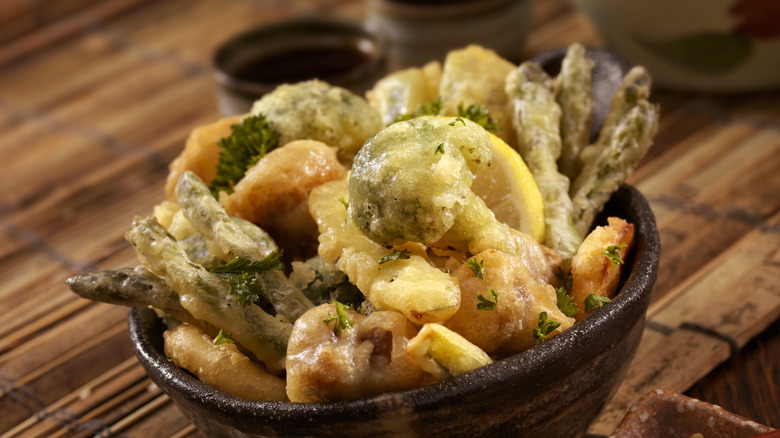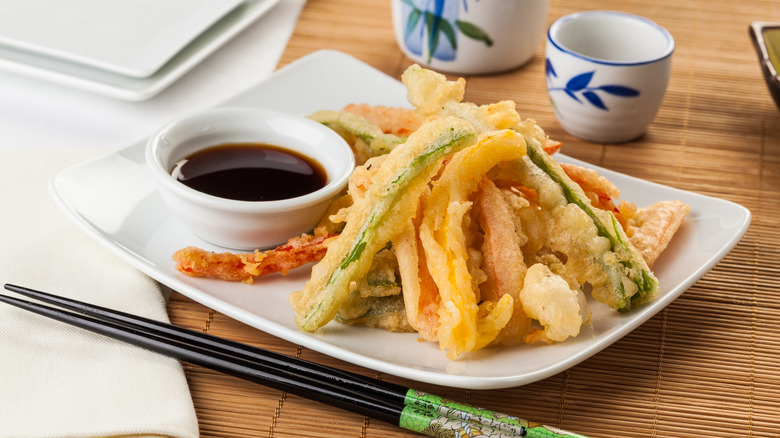Despite What You May Think, Tempura Is Not A Japanese Invention
Japanese food is a wondrous blend of subtle and intense flavors unlike any other global cuisine. Sushi, sashimi, hibachi — there are many different cooking styles and delicious dishes found in Japanese food. One style you're sure to find on nearly every Japanese restaurant menu in America is tempura, lightly battered (usually) vegetables or shrimp served with a tangy dipping sauce. Tempura batter is so distinct from other fried foods that you can even use it as an ice cream topping.
Only, tempura isn't a purely Japanese creation at all. Instead, it's one of history's longest-surviving examples of verifiable fusion cuisine — in this case, between Japan and Portugal. Tempura's origin story involves the intersection of Catholicism, Japanese tastes, and the Sengoku Jidai period of the 16th and 17th centuries. The ever-popular technique of frying in oil, in general, was supposedly introduced to Japan by Portuguese sailors and missionaries.
Tempura exists because a Portuguese ship crash-landed in Japan
To understand where tempura came from, you must also understand a little about Japanese history during the Sengoku period. Japan had virtually no contact with Europeans until the early 1540s when a Portuguese ship veered off route and crashed on the island of Tanegashima. Over the next several decades, the Portuguese — particularly the Jesuit Catholic order — would interweave themselves with the highest levels of Japanese society and culture.
This is where tempura comes into play. Portugal was a Catholic country, and Catholicism forbids the eating of meat during Lent. As a result, Portuguese sailors and missionaries in Japan started frying vegetables and seafood in sesame oil when they couldn't eat red meat. Japanese cooks saw this and adapted the dish to Japanese tastes by lightening it with cold water to create the airy bubbles tempura is known for today.
Tempura outlasted the presence of the Portuguese in Japan
As for where the word "tempura" comes from, it's a bastardization of the term "ad tempora cuaresme," meaning in the time of Lent (or possibly "quatuor tempora," meaning "Ember Days," of which Lent is one). Interestingly, it's one of the few times during the period Japanese cuisine adapted to Western ideas about food; red meat, in particular, was outright banned in Japan for centuries thanks to the strong presence of Buddhism within the country.
All Westerners were expelled from Japan in 1639 under the edicts of the Tokugawa shogunate — although the Dutch were still allowed to trade from a small manmade island off the port of Nagasaki. But some of the cooking concepts introduced by the Portuguese remained, and tempura was one of them. This expulsion may be why we don't have hard evidence of tempura's origin; many records of Western influence on Japanese life were destroyed during the expulsion period. But historians feel comfortable making educated guesses here, and there's no evidence to refute this as tempura's origin story, so who are we to argue?


